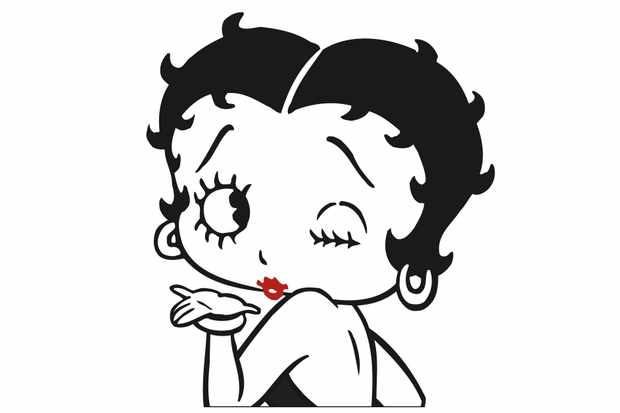
YES, SHIPPING/HANDLING DISCOUNT IS OFFERED WHEN BUYING MULTIPLE ITEMS AND PAYING AT THE SAME TIME, YOU WILL HAVE UP TO 7 DAYS TO PAY AS SOON AS THE FIRST AUCTION ENDS. The digital drawing will be mailed out in a flat envelope and ' DO NOT BEND' written on it.A TRACKING NUMBER WILL BE PROVIDED WHEN THE DRAWING(S) HAVE BEEN SHIPPED.
PIN UP BETTY BOOP DRAWING SOFTWARE
This drawing was created by free hand and colored with a software Radiant and brighter colors very nice. Buy it now listing, sizes available 4圆, 5x7 and 8x10 PRINTED ON A GLOSSY PHOTO PAPER. Digital art drawing of a nude and sexy Betty Boop, very cute drawing signed and dated by the artist. Gradually overtime she was illustrated in her pin-up attire once again.Item: 391513216745 Digital drawing, pinup erotic art, adult cartoon of a nude Betty Boop, signed. This minor change caused a decline in her popularity. The National Legion of Decency defined Betty Boop as “objectionable content”, which resulted in her being illustrated in less revealing clothes.

Proof of her sex-symbol status became clear several years later. Some examples of this are characters looking up her skirt and other forms of sexual harassment. Betty Boop is an animated version of the pin-girl, often depicted in revealing and short clothing and often sexualized by the other male characters in the cartoon. Betty was unique during her debut because often female cartoons during the time were cloned sidekicks to their male counter part. Making her first appearance in 1930, she was a symbol of both parody and sexuality throughout her popularity. The majority of her portraits have her in revealing attire (or no clothes at all), suggestive positions, and she is exceptionally attractive.īetty Boop was a cartoon originally illustrated by Max Fleischer. However, the trope still stands as Hilda very much sexualized. What stands out about Hilda compared to your traditional pin-up girl? What sets Hilda apart from other pin-ups at the time was her figure which was larger, curvier, and more realistic to women’s body types. Most drawings of Hilda were done during the 1950s, during a time when modern pin-ups were popular. This next image is from a calendar collection of Hilda, a pin-up character illustrated by Duane Bryers. Depicting fan’s favorite characters in a sexually suggestive way made them more enticing to comic readers. Women in comics were initially drawn for the male-gaze because that’s initially what their target audience was. There is a large controversy in the comicbook world about how women are viewed and sexualized. So this begs the question, why did DC bother with the pin-up trope in the first place. The design became so popular with fans that eventually DC Bombshells got its own line of comics.
PIN UP BETTY BOOP DRAWING SERIES
This artwork style was later depicted on some covers of comic book series of some of the characters depicted in this poster. This art was initially put in various comic books to advertise a line of figurines called “DC Bombshells” that were based on 1940s retro pin-up style artwork. The design above depicts different women from the DC comic book universe. The first image is a pin-up by Earl Moran and the second image is a vintage Guinness advertisement. The two images below depict what often comes to mind when we think of “pin up girls”.

These photos inspired many illustrations. Popular celebrities such as Marilyn Monroe and Betty Grable were photographed as pin-ups. Early popular artists that drew pin-up include Alberto Vargas, George Petty, and Art Frahm. The use of pin-up girls was especially popular in posters relating to war-efforts.

Photos of pin-up girls were often mass-produced in many forms of media such as calendars and advertisements. The women are also shown in suggestive or revealing positions. Pin-up attire and looks have varied through out the decades, however the attire and style that comes to mind is fashion from the World War I and II era that is tight and revealing (and sometimes no clothes at all). A pin-up girl is a depiction of an extremely attractive, thin, white, young woman (ideal beauty standards at the time) whose photo was enticing enough to “pin up” on a wall, also known as the bombshell stereotype. One of the most recognizable sex-symbol tropes in media is pin-up portraits. We see it in almost every genre of media, and in the United States advertising of products causes us to confront hyper-sexualization of women every day. There is no doubt about the disproportionate sexualization of women in media compared to men.


 0 kommentar(er)
0 kommentar(er)
